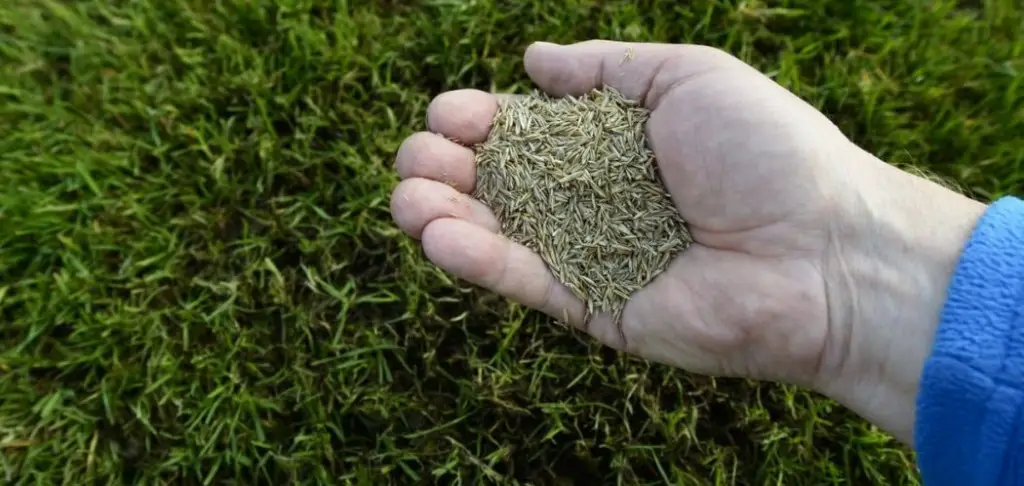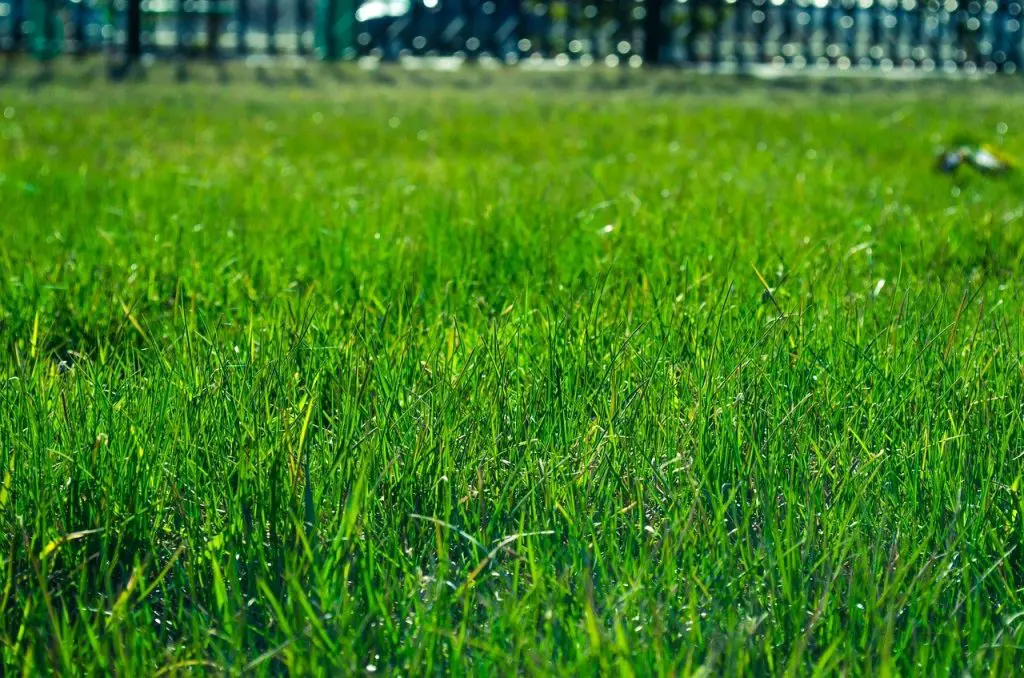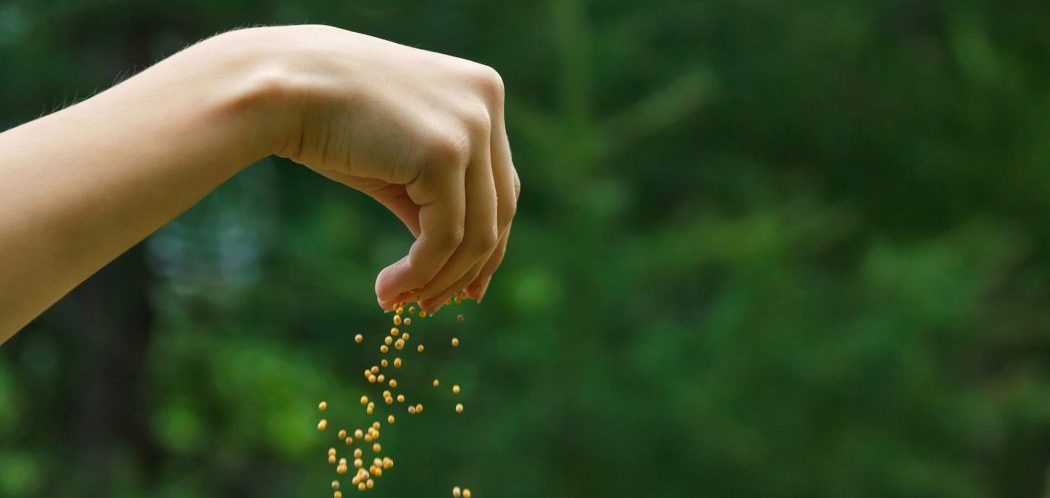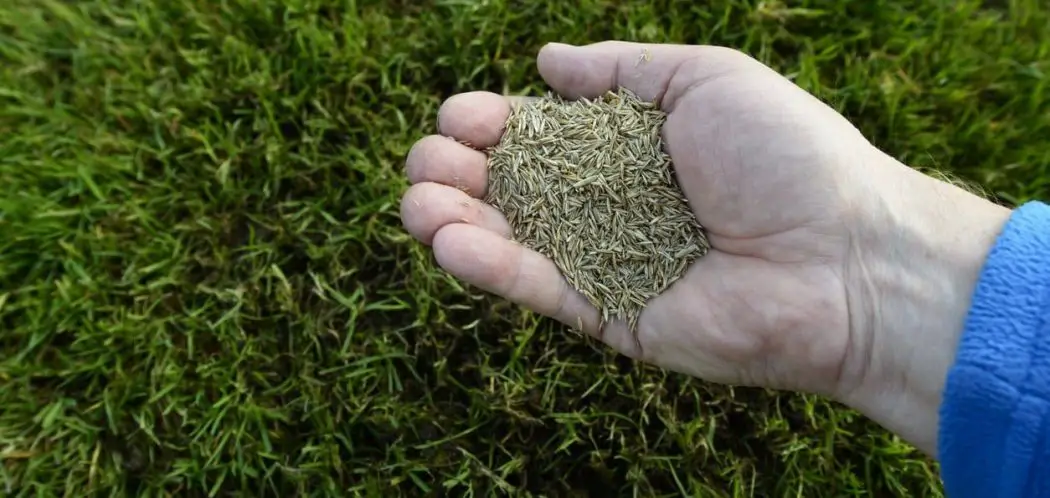Interested in reseeding your lawn because it’s looking a little thin and faded? When you buy seeds, you can usually buy them in 20, 40 or even 50-lb bags.
Depending on the type of seed you buy, you’ll have to first determine how many bags of seed you’ll need to make sure the area is covered thoroughly. You’re usually recommended to get slightly larger bags of seed than you think you need to make sure you don’t run out as you work.
How much will a 50lb bag of grass seed cover?
The answer will vary, but as a general rule, you’ll need 1 to 5 lbs of seed for every 1,000 square feet of coverage which means a 50lb bag of seed will cover up to 10,000 square feet of lawn.

Of course, that number may change depending on the type of seed it is but this is a general guideline that you can follow when you’re trying to buy the right amount of grass seed.
Many home-improvement stores can give you a more exact number so that you end up buying enough to cover your yard. Some stores have a chart that you can look at to make sure you buy enough.
It’s also important to recognise that each type of grass is different. For example, Bermuda grass requires that you purchase 1 to 2 lbs for every 1,000 square feet that you need to cover.
The Type of Grass Makes a Difference
Different types of grass make a difference when you’re trying to reseed your lawn as well the temperature and even the growing zone where you live.
If you live in a cooler area you might need a little more seed than people who live in warmer climates. Even the type of seed you’re working with can make a difference.
The packaging can give you more specific information that can help you decide how much seed you’ll need to purchase for your particular yard but if you’re in a feed store that sells it in bulk, you’ll need to get an accurate estimate of how much seed you’ll need before you make the purchase.
It also makes a difference if your yard is being seeded for the first time or simply being reseeded. Naturally, a brand-new yard with nothing planted yet will require more seed than a yard that already has grass planted there which simply needs some additional seeds so that your lawn isn’t patchy or too thin.
Most people plant roughly 2 to 3 lbs of seed for every 1,000 square feet of coverage needed but if you’re interested in discovering some specific details on various types of seed, here are a few recommendations (these are the recommended amounts per 1,000 square feet):

Recommendations
- Bahia: new lawn 7-10 lbs. / overseeding 4-5 lbs.
- Bermuda grass: new lawn 1.5-2.5 lbs. / overseeding .75-1.25 lbs.
- Centipede grass: new lawn 1 lb. / overseeding .5 lb.
- Kentucky bluegrass: new lawn 2-3 lbs. / overseeding 1-2 lbs.
- Perennial rye grass: new lawn 9-10 lbs. / overseeding 5-6 lbs.
- Tall fescue: new lawn 8-10 lbs. / overseeding 4-5 lbs.
- Zoysia grass: new lawn 2 lbs. / overseeding 1 lb.
There are other things to consider when deciding how much seed you’ll need. These things include:
- Paying attention to whether or not the seeds are coated. For uncoated seeds, you’ll need fewer seeds and therefore you can look at the numbers at the lower end of the recommended amounts. Coated seeds are the opposite – you need to choose a number that’s on the higher end of the recommended amounts.
- If you choose St. Augustine grass, keep in mind that this type is essentially never purchased in seed form. This type of grass usually comes as either sod or plugs and planted into the ground, not grown from seed.
Other Factors to Consider
In addition, there are other factors that need to be taken into consideration when deciding how much seed to buy. These include the following
Type of seed purchased
Again, the type of seed you purchase will affect how much you use. If the seeds are without coating, inert material, fillers and seed starter, you’ll need to use a smaller amount of seed than seeds with coatings, fillers and so on.
The amount of sunlight in the area
The shade or sunlight in your yard will affect how fast the seeds germinate. The more sunlight the area gets, the faster the seeds will germinate so don’t expect an exact timeframe for this germination to occur.
Consider that all projects will be different
Less space to fill, for example, means the growth you’re expecting will come sooner, whereas lawns that are very patchy and need lots of seed may take longer than you expect to grow and thrive.
Can you plant too much seed?
If you’re wondering if you can plant too much seed, the answer is “yes.” While it makes sense to assume that too much seed will result in a lawn that is even thicker and more luxurious, it is often counterproductive to do this.
Using too little and too much seed on your lawn can be a problem because they can make your lawn look patchy. If you’re close on the amounts, it won’t matter because you can always come back the following year and add more seed if you need to.
In Summary
So, just how much will a 50lb bag of grass seed cover in most cases? More often than not, up to 10,000 square feet will cover a lot of yards out there. While the general recommendation is to buy 1 to 5 lbs of seed for every 1,000 square feet you need covered, in most cases you’ll want to purchase 2 to 3 lbs.
You’ll always want to keep in mind which factors to take into consideration before you visit the feed or home-improvement store because going there with no idea of how much seed to get will be unproductive and will likely cause frustration on your part.





